Greetings and Welcome
Thank you for visiting our mobile site, and thank you for your patronage. This mobile website serves as a companion for the book titled The Age of Homo Sapiens Sapiens: Heaven or Hell by Edward E. Bruessard. It is a book about the human condition and humankind's future on Earth.
In deference to the Earth's past, present, and future, the following images are being brought to you courtesy of NASA's Spitzer Space Telescope, NASA's Jet Propulsion Laboratory (JPL), and the California Institute of Technology's Spitzer Science Center.
![1 of 11. In this image of the Hubble Ultra Deep Field, several objects are identified as the faintest, most compact galaxies ever observed in the distant universe. They are so far away that we see them as they looked less than one billion years after the Big Bang. Blazing with the brilliance of millions of stars, each of the newly discovered galaxies is a hundred to a thousand times smaller than our Milky Way Galaxy. The detection required joint observations between Hubble and NASA's Spitzer Space Telescope. Blue light seen by Hubble shows the presence of young stars. The absence of infrared light from Spitzer observations conclusively shows that these are truly young galaxies without an earlier generation of stars. [Credit: NASA, ESA, and N. Pirzkal (STScI/ESA)] 1 of 11. In this image of the Hubble Ultra Deep Field, several objects are identified as the faintest, most compact galaxies ever observed in the distant universe. They are so far away that we see them as they looked less than one billion years after the Big Bang. Blazing with the brilliance of millions of stars, each of the newly discovered galaxies is a hundred to a thousand times smaller than our Milky Way Galaxy. The detection required joint observations between Hubble and NASA's Spitzer Space Telescope. Blue light seen by Hubble shows the presence of young stars. The absence of infrared light from Spitzer observations conclusively shows that these are truly young galaxies without an earlier generation of stars. [Credit: NASA, ESA, and N. Pirzkal (STScI/ESA)]](images/nivo/01_ssc2007-15a1.jpg)
![2 of 11. Astronomers have discovered one of the most distant planets known, a gas giant about 13,000 light-years from Earth, called OGLE-2014-BLG-0124L. The planet was discovered using a technique called microlensing, and the help of NASA's Spitzer Space Telescope and the Optical Gravitational Lensing Experiment, or OGLE. In this artist's illustration, planets discovered with microlensing are shown in yellow. The farthest lies in the center of our galaxy, 25,000 light-years away. [Credit: NASA/JPL-Caltech/R. Hurt (IPAC)] 2 of 11. Astronomers have discovered one of the most distant planets known, a gas giant about 13,000 light-years from Earth, called OGLE-2014-BLG-0124L. The planet was discovered using a technique called microlensing, and the help of NASA's Spitzer Space Telescope and the Optical Gravitational Lensing Experiment, or OGLE. In this artist's illustration, planets discovered with microlensing are shown in yellow. The farthest lies in the center of our galaxy, 25,000 light-years away. [Credit: NASA/JPL-Caltech/R. Hurt (IPAC)]](images/nivo/02_sig15-006.jpg)
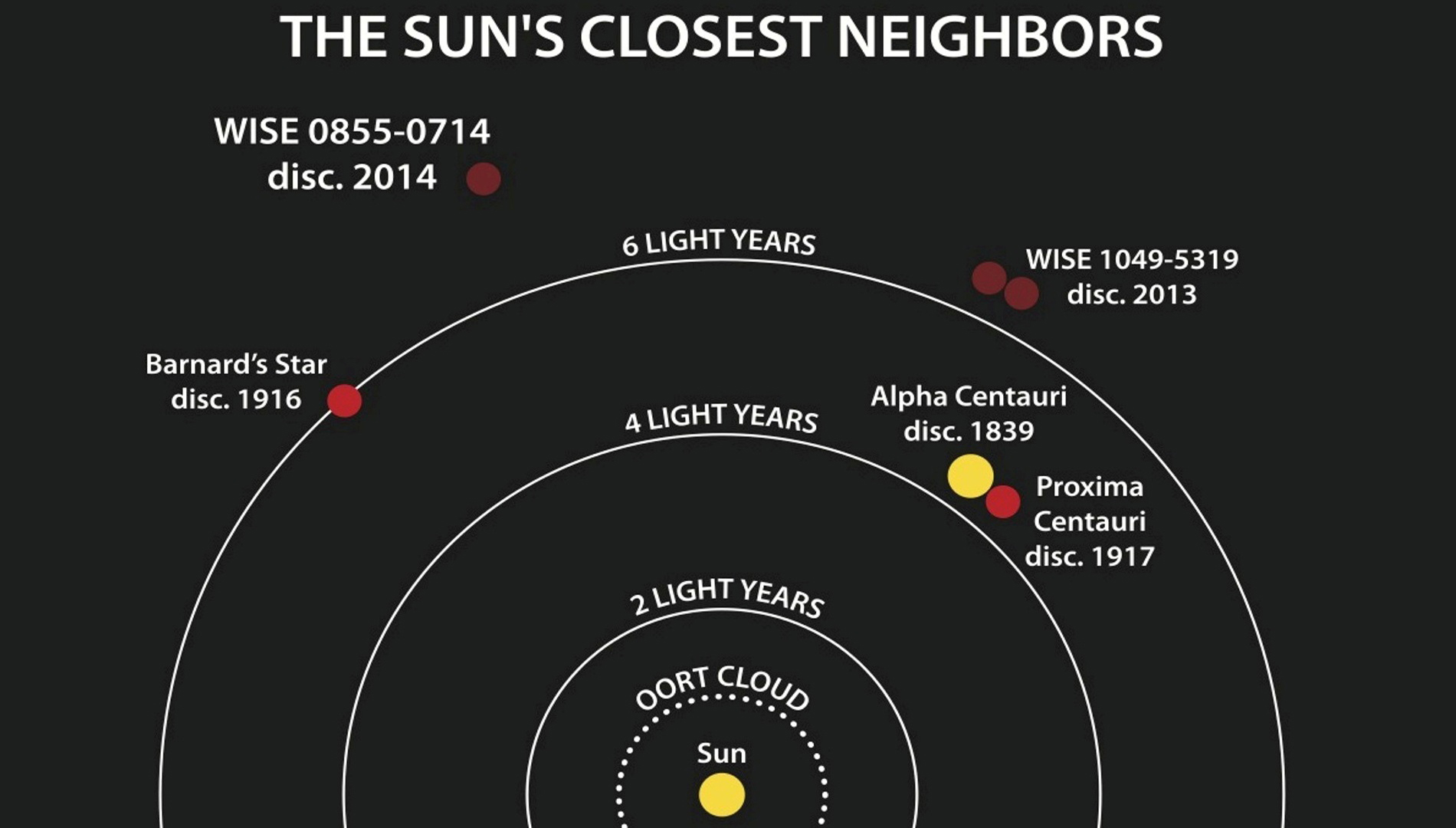
![4 of 11. This artist's conception shows…our own solar system. [Credit: NASA/JPL-Caltech/T. Pyle (SSC)] 4 of 11. This artist's conception shows…our own solar system. [Credit: NASA/JPL-Caltech/T. Pyle (SSC)]](images/nivo/04_ssc2005-06c.jpg)
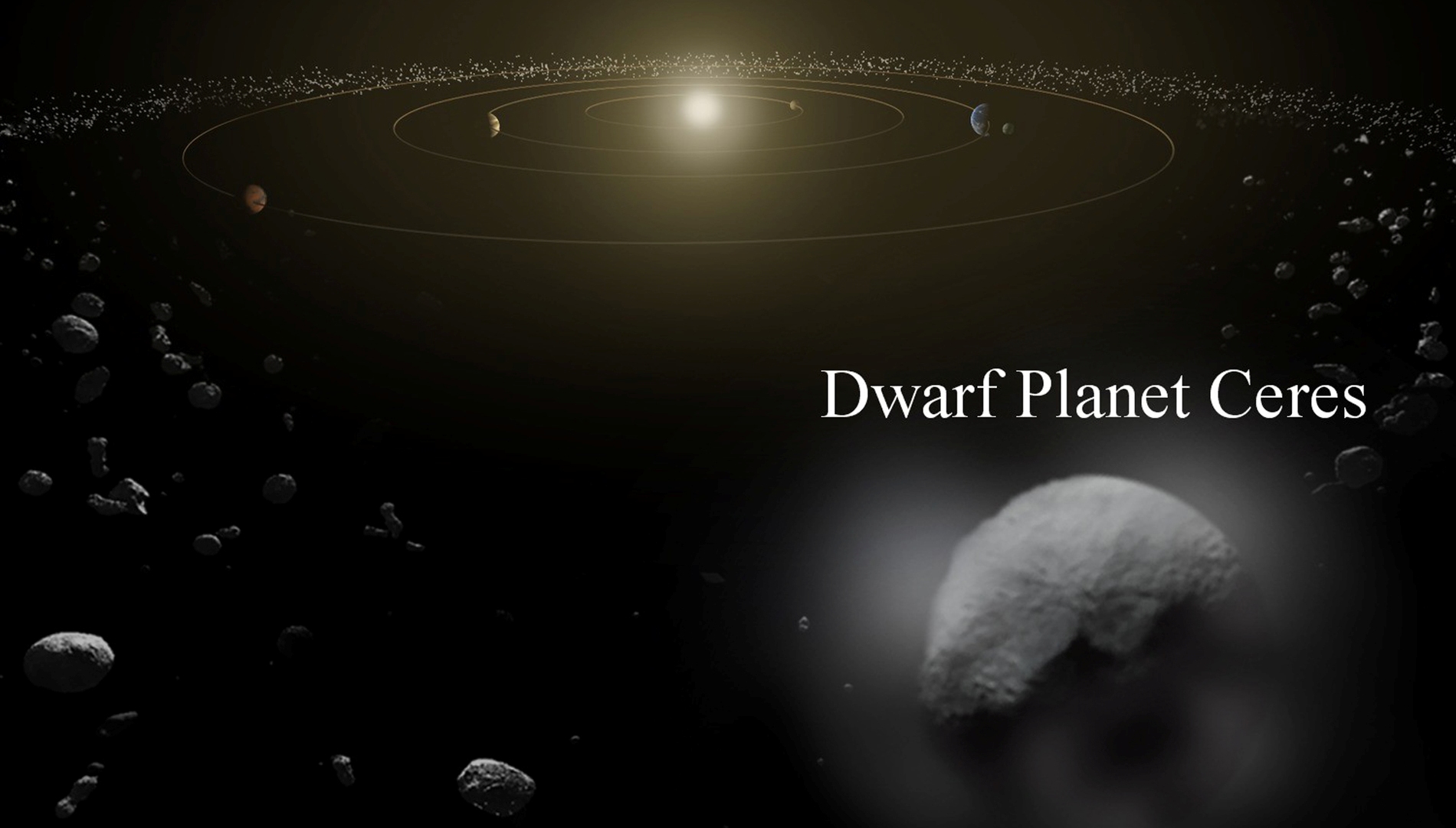
![6 of 11. The gantry on the Delta II rocket that launched the Spitzer Space Telescope is rolled back on August 24, 2003, the day before the launch. [Credit: NASA/JPL-Caltech/R. Hurt (SSC)] 6 of 11. The gantry on the Delta II rocket that launched the Spitzer Space Telescope is rolled back on August 24, 2003, the day before the launch. [Credit: NASA/JPL-Caltech/R. Hurt (SSC)]](images/nivo/06_gantryroll0824rh_02_Ti.jpg)
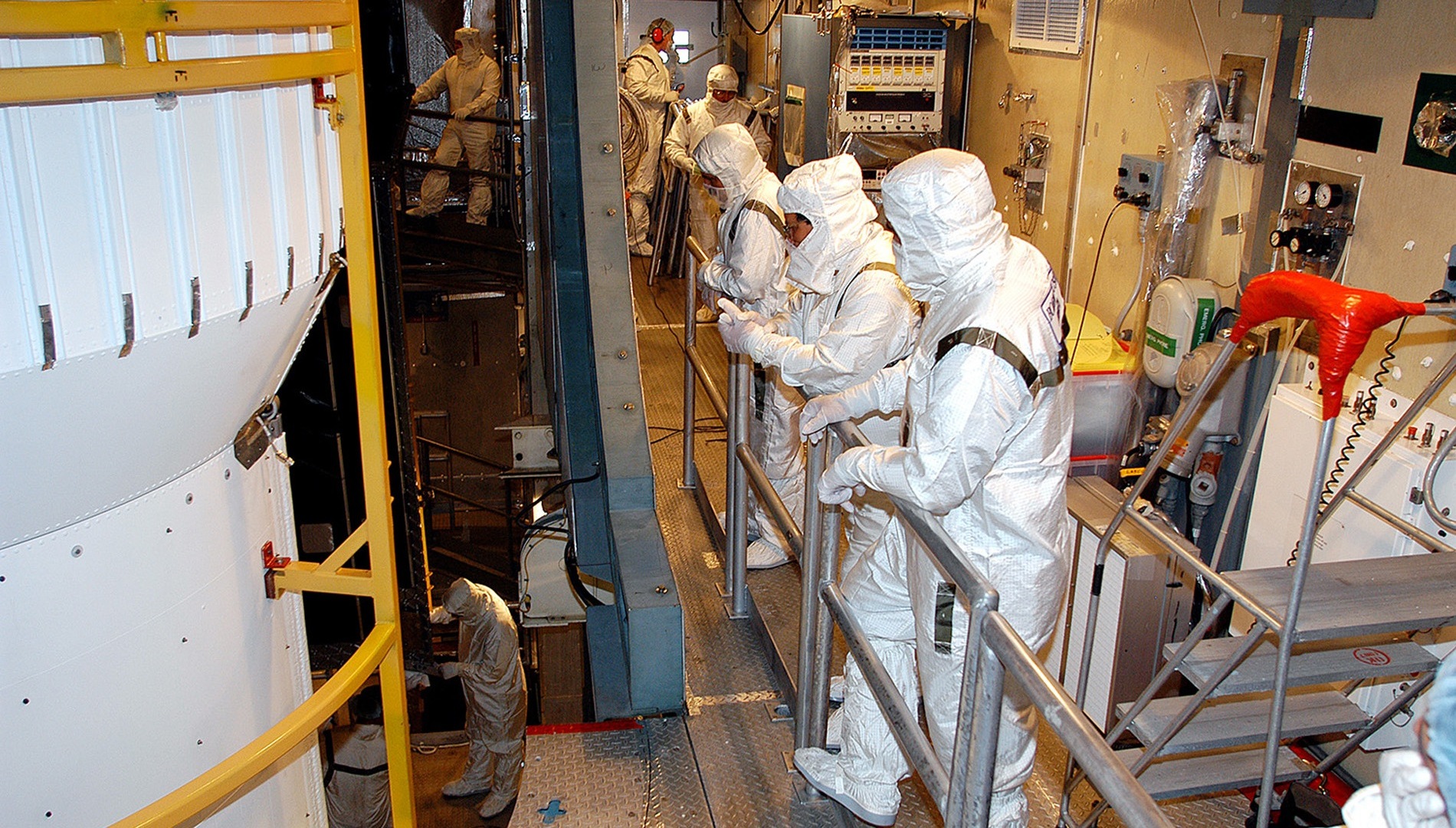
![8 of 11. Spitzer Science Center [Credit: NASA/JPL-Caltech/J. Keller (SSC)] 8 of 11. Spitzer Science Center [Credit: NASA/JPL-Caltech/J. Keller (SSC)]](images/nivo/08_ks3_20040802_Ti.jpg)
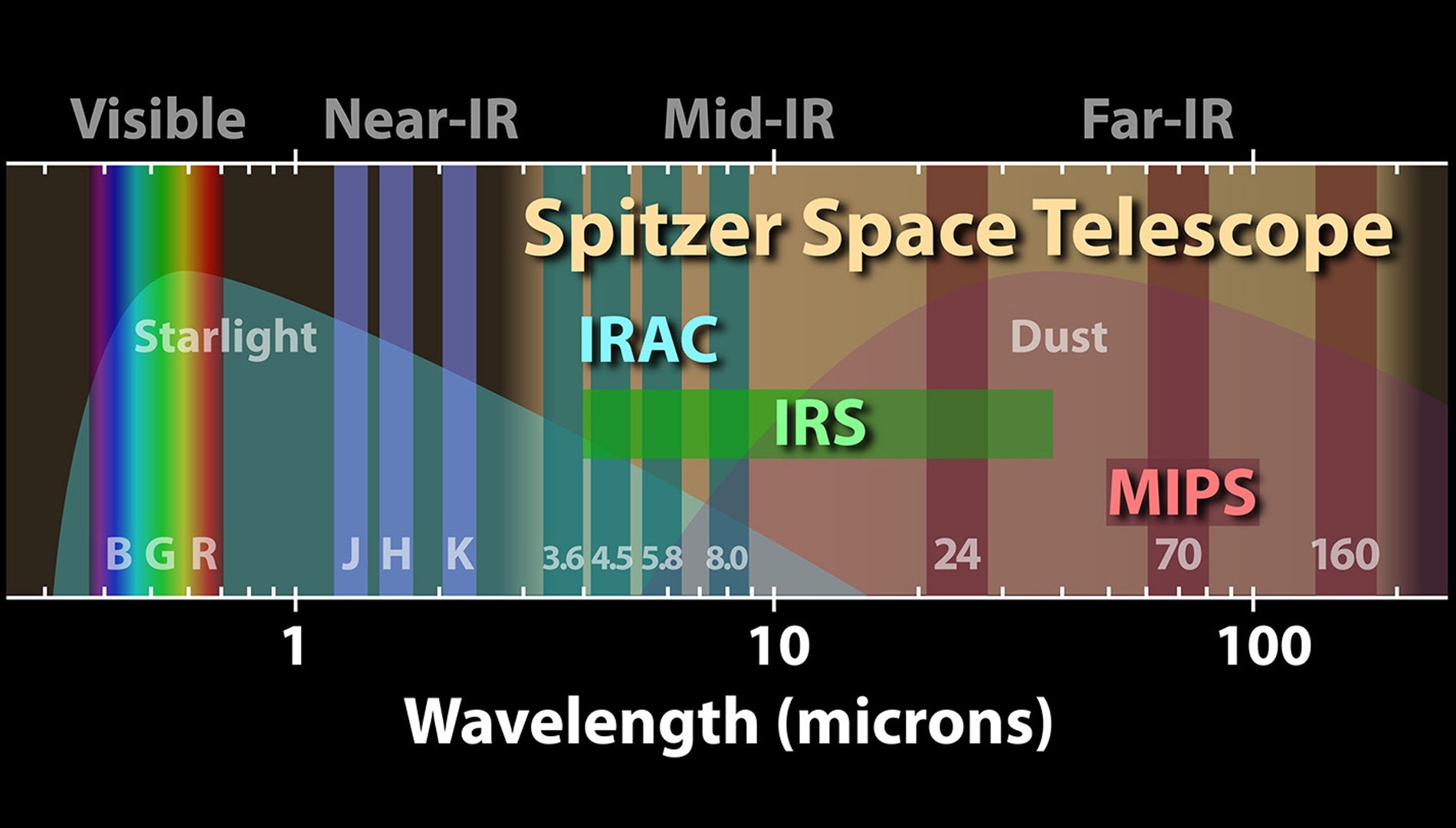
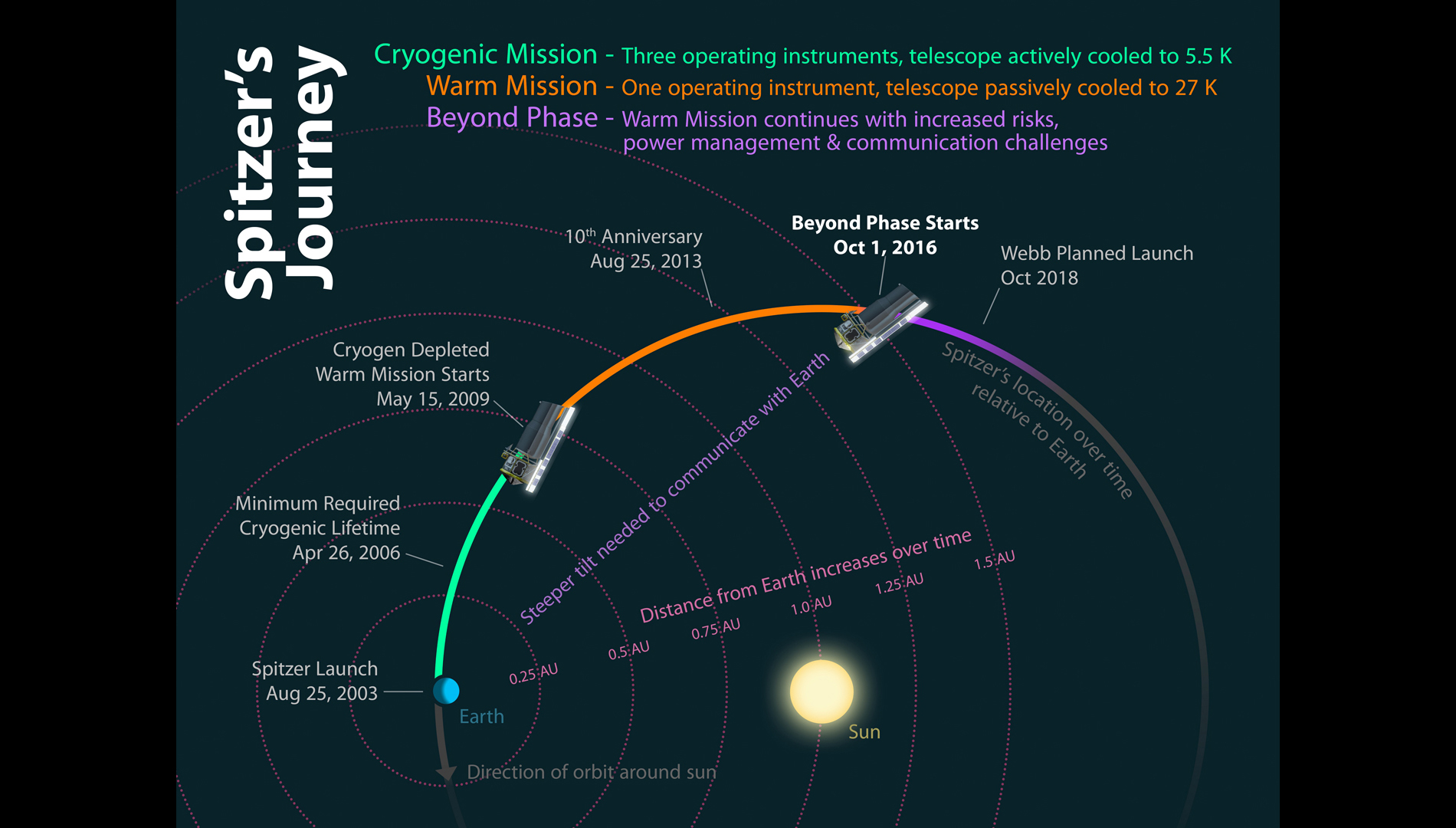
![11 of 11. This artist's concept shows NASA's Spitzer Space Telescope. Spitzer begins its 'Beyond' mission phase on Oct. 1, 2016. Spitzer is depicted in the orientation it assumes to establish communications with ground stations. On January 30th 2020, NASA's Spitzer Space Telescope completed its mission. [Credit: NASA/JPL-Caltech/T. Pyle (IPAC)] 11 of 11. This artist's concept shows NASA's Spitzer Space Telescope. Spitzer begins its 'Beyond' mission phase on Oct. 1, 2016. Spitzer is depicted in the orientation it assumes to establish communications with ground stations. On January 30th 2020, NASA's Spitzer Space Telescope completed its mission. [Credit: NASA/JPL-Caltech/T. Pyle (IPAC)]](images/nivo/11-spitzerbeyond.jpg)
In deference to science, the following videos also are being brought to you courtesy of the Spitzer Space Center.